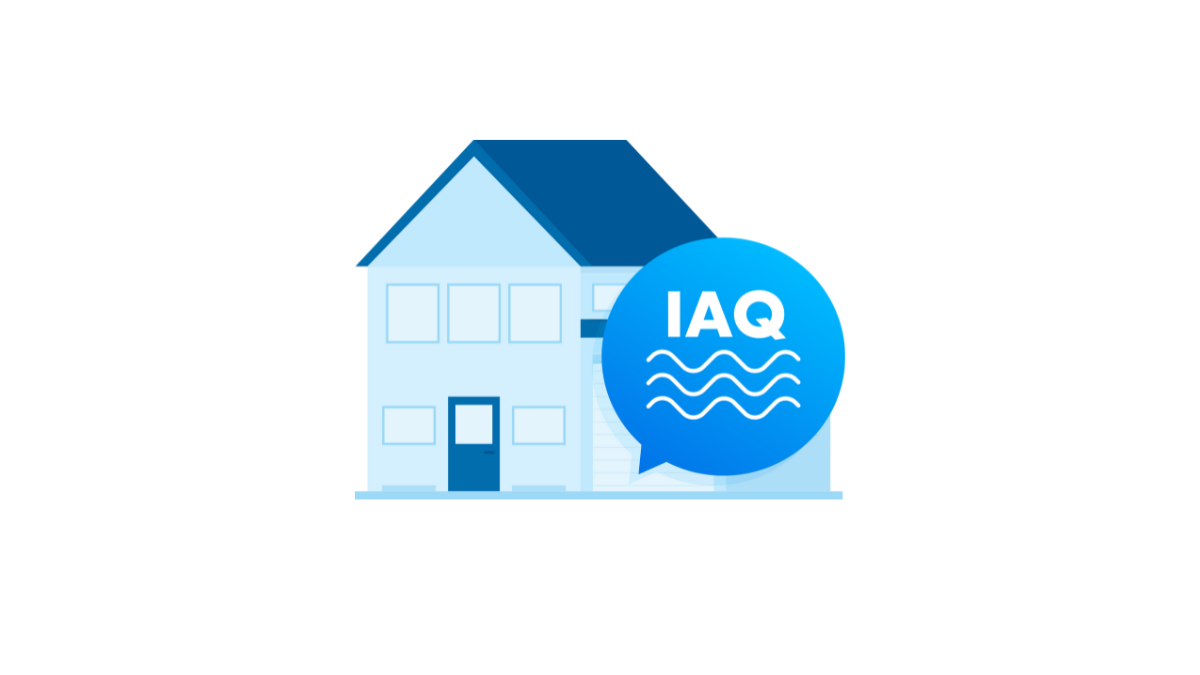Improve Indoor Air Quality by Maintaining Exhaust Fans
- AC Maintenance
- Clean ducts & vents
- Ductless heating and AC Services
- HVAC Maintenance
- Heating Maintenance
- Install AC
- Install ducts & Vents
- Install heating system
- Install Thermostat
- Repair AC
- Repair HVAC
- Repair ducts & vents
- Repair heating system
- Repair thermostat
- Air Conditioning Repair
Regular maintenance of your exhaust fan is crucial for enhancing indoor air quality.
Ventilation plays a crucial role in mitigating heat buildup, especially in the scorching Las Vegas summers when temperatures frequently exceed 100°F. While little maintenance is required for an attic fan, it is essential to regularly attend to the exhaust fans in your bathroom and kitchen to ensure optimal performance. These fans efficiently extract excess moisture, vapor, smoke, and unpleasant odors from the respective rooms. By diligently maintaining these exhaust fans, Las Vegas homeowners can significantly enhance the indoor air quality of their residences.
Proper maintenance of bathroom and kitchen exhaust fans is essential for optimal functionality. Regular cleaning of the fan blades and housing helps prevent the buildup of dust and debris, ensuring efficient air circulation. Additionally, checking and replacing the fan’s filters as needed helps maintain good indoor air quality. By following these techniques, you can ensure that your bathroom and kitchen exhaust fans continue to operate effectively.
To clean a bathroom exhaust fan, turn off the power, remove the cover, and gently clean the fan blades and housing using a soft brush or vacuum cleaner. Make sure to remove any accumulated dust and debris for optimal performance.
- Disconnect your bathroom exhaust from power. You may need to turn off the circuit that feeds your fan at the breaker box.
- Gently remove the exhaust grate. You may need to unscrew a few screws, but most modern exhaust fans are held in place with tension clips that only require light pressure to remove. If your exhaust fan has an attached light, disconnect the wire before fully removing the grate.
- Gently wash grate-only exhaust fans with dish soap and water. If the grate is particularly grimy, soak it in soapy water for a few minutes before cleaning it with a cloth or brush. Allow it to dry completely. Skip this step if your exhaust fan has an attached light.
- Use a hand vacuum, vacuum hose attachment, or cloth to remove dust and debris from the fan mechanism. Vacuum dust off any fan grates with attached lights, wiping grime off the grate and fan mechanism with a slightly damp cloth.
- Replace the grate when dry, reconnect any wires, and turn on the circuit for your bathroom.
It’s best to clean your bathroom exhaust fans about once a year.
Do Bathroom Exhaust Fans Need to Be Vented Outside?
Yes, bathroom exhaust fans need to be vented outside to effectively remove moisture from the bathroom. Venting them into the attic can lead to mold, mildew growth, and potential structural damage. It is important to vent the exhaust fan either through the attic or through an outside wall to ensure proper ventilation and prevent any potential damage to your home.
When to Replace Your Exhaust Fan
If your bathroom exhaust fan has become noticeably louder, is no longer effectively removing moisture or odors, or has surpassed its average lifespan of ten years, it may be necessary to replace the unit. Upgrading to a new exhaust fan will ensure efficient ventilation and maintain a pleasant environment in your bathroom. By addressing these issues promptly, you can prevent further complications that may arise from inadequate ventilation, such as mold growth or unpleasant odors. Regularly monitoring the performance of your bathroom exhaust fan and replacing it when necessary is essential for maintaining a healthy and comfortable bathroom space.
Kitchen Exhaust Fan Maintenance
If your kitchen exhaust fan is no longer functioning at its optimal capacity and it has been more than a decade since you last replaced it, it may be prudent to consider investing in a new fan. While kitchen exhaust fans typically have a lifespan of around 12-20 years, it is always advisable to consult your manufacturer for precise information regarding the expected longevity of your specific fan model. By replacing your outdated fan, you can ensure efficient ventilation in your kitchen, promoting a healthier and more comfortable cooking environment. Don’t hesitate to explore the options available to you and make an informed decision to enhance the functionality of your kitchen exhaust system.
How to Clean a Kitchen Exhaust Fan of Grease and Grime
Ensure to review the manufacturer’s information for your fan to determine if the grease filter is washable or disposable. Have a replacement filter available before initiating the cleaning process, if necessary.
- Unplug the exhaust fan or turn off power at the breaker box if you can’t easily reach the plug.
- Using gloves, carefully remove the mesh rectangle under the fan. This is the grease filter. You may need to unhook it from the tabs keeping it in place. If you can’t lift it out by hand, carefully lever it loose with a flathead screwdriver or a butter knife.
- Soak a washable filter in boiling water for a few minutes before using a nylon bristle brush to scrub it with hot water and a degreasing soap, like dish soap. Be careful not to burn yourself on hot metal.
- Remove the fan blades to inspect them for grease. If they need cleaning, soak and scrub them as you did the washable filter.
- Let the filter and fan blades dry completely on a towel for about two hours.
- While the removable parts dry, inspect the rest of the still-attached fan for grease spots. Wipe them up carefully with a slightly damp cloth.
- When everything is completely dry, reassemble your exhaust fan. Replace a disposable filter if necessary. Plug the fan back in and make sure the power is turned on to the circuit.
Kitchen exhaust fans should be cleaned annually, unless noticeable grease buildup is present. Use a degreaser to wipe away accumulated grease as necessary.
Información disponible en español
The most effective ways to improve your indoor air are to reduce or remove the sources of pollutants and to ventilate with clean outdoor air. In addition, research shows that filtration can be an effective supplement to source control and ventilation. Using a portable air cleaner and/or upgrading the air filter in your furnace or central heating, ventilation, and air-conditioning (HVAC) system can help to improve indoor air quality. Portable air cleaners, also known as air purifiers or air sanitizers, are designed to filter the air in a single room or area. Central furnace or HVAC filters are designed to filter air throughout a home. Portable air cleaners and HVAC filters can reduce indoor air pollution; however, they cannot remove all pollutants from the air. Learn more
The following publications provide information on portable air cleaners and on HVAC and furnace filters commonly used in homes.
Air Sensor technology advances and increasing availability in the consumer marketplace are changing the landscape of indoor air quality management. As air sensor technology evolves and becomes more widely used in relation to indoor air quality management, it is increasingly common for a sensor or a combination of sensors to be incorporated in equipment, appliances and other devices that measure, record, and/or display the concentration of certain pollutants or environmental conditions indoors. In addition, sensors are increasingly being used in devices to trigger an action, such as turning on an exhaust fan or air cleaner when pollutant concentrations or environmental conditions exceed a pre-defined level.Learn more
Some common consumer uses of air sensor technology indoors include:
- Detecting airborne pollutant concentrations. For example, some devices are designed to detect and indicate levels of a targeted pollutant like particulate matter (PM) indoors.
- Triggering an action in equipment, appliances, or other devices such as turning on an air cleaner when pollutant concentrations or environmental conditions exceed a pre-defined level.
- Activation of safety devices such as carbon monoxide alarms and smoke detectors when concentrations of carbon monoxide or components of smoke reach levels that indicate the potential for immediate danger to life. Lear more
In addition, air sensor technology is used for indoor air research and educational activities. For example, air sensor technology can be used in research to better understand total exposure to specific pollutants. Portable devices that use air sensor technology also may be included in environmental science curriculums to help students understand indoor air quality in their classrooms.
Despite many advances, there are still gaps in our understanding of the data quality and performance of sensor technology indoors. Additional research is needed to better characterize the use of air sensor technology indoors. Learn more
Air Sensor Technology and Indoor Air Quality
Improving the Air Quality in Your Las Vegas Home
For optimal air quality in your home, it is crucial to ensure that your exhaust fans are in proper working order. In addition to maintaining your exhaust fans, Eco Friendly Air Conditioning and Heating Repair of Las Vegas offers a range of indoor air quality solutions. Our team is experienced in installing and repairing humidifiers and air handlers, providing you with a comfortable and healthy living environment. To begin enhancing your home’s air quality, please contact us at 702-516-9999. Lear more
Schedule Now









